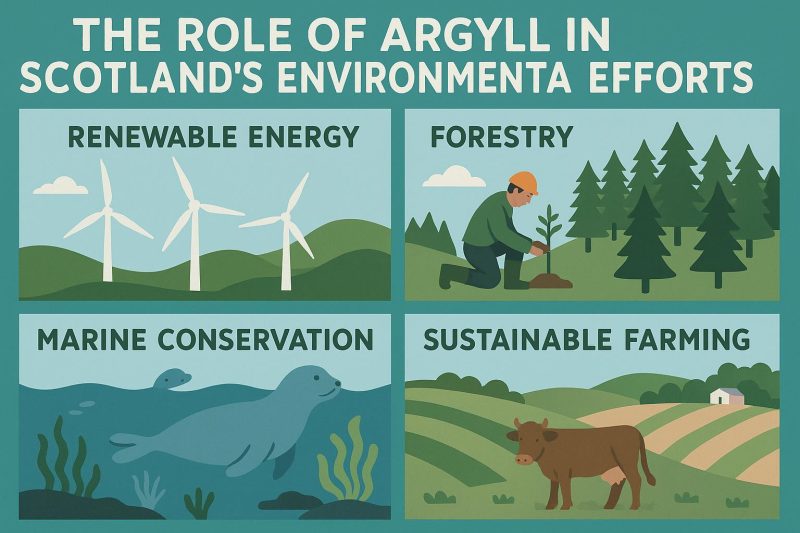Argyll’s Contribution to Environmental Conservation
The region of Argyll, situated on the western coast of Scotland, serves as a crucial area for environmental conservation initiatives. This region’s diverse landscapes, which span from rugged coastlines to extensive woodlands, provide innumerable opportunities for environmental conservation and the implementation of sustainable practices. This document seeks to explore Argyll’s contribution through various environmental efforts that support biodiversity, wildlife conservation, forestry management, marine protection, and renewable energy.
Biodiversity and Wildlife Conservation
Argyll’s rich natural environment is characterized by a remarkable level of biodiversity. The region is home to an impressive range of wildlife species, including otters, red squirrels, and birds such as the golden eagle. Conservationists in Argyll work diligently to protect these species through initiatives focusing on habitat restoration and ongoing monitoring programs.
The Scottish Natural Heritage, committed to environmental stewardship, collaborates with local communities to meet conservation objectives effectively. Their strategic plans are designed to protect fragile habitats, ensuring that wildlife populations remain stable and flourish in a healthy ecosystem.
Marine Protection Efforts
The coastal regions of Argyll hold significant importance for broader marine conservation efforts in Scotland. To protect marine ecosystems from the adverse effects of overfishing and pollution, various protective measures are in place. Notably, the establishment of Marine Protected Areas (MPAs) plays a pivotal role in preserving marine life and maintaining the delicate ecological balance essential for marine biodiversity.
Forestry and Land Management
The forests of Argyll are integral to the broader environmental strategy employed across Scotland. These woodlands act as vital carbon sinks, playing a crucial role in mitigating the impacts of climate change. Organizations like Forestry and Land Scotland are deeply engaged in promoting sustainable forestry practices. They ensure that tree planting and harvesting operations are balanced, thereby maintaining the ecological integrity that is essential for healthy forest ecosystems.
Community Involvement
An essential component of the success of environmental initiatives in Argyll is the active participation of local communities. Educational programs and awareness campaigns are designed to engage residents in conservation activities, fostering a collective sense of responsibility towards environmental stewardship.
Local communities are encouraged to take part in various projects, such as reforestation efforts, habitat clean-ups, and the promotion of renewable energy initiatives. These actions significantly contribute to the overall environmental sustainability in the region, and they underscore the importance of grassroots involvement.
Renewable Energy and Sustainability
At the forefront of renewable energy efforts in Scotland, Argyll is abundant with natural resources that are optimal for producing renewable energy, particularly wind and tidal energy. Projects across the region are focused on harnessing these local resources to reduce dependency on fossil fuels. This shift supports clean energy goals and contributes to a more sustainable future.
In conclusion, Argyll’s role in environmental efforts highlights its noteworthy commitment to sustainability and biodiversity conservation. Through a combination of community involvement and strategic resource management, Argyll continues to set an exemplary standard for environmental initiatives both within Scotland and in the broader international context.

